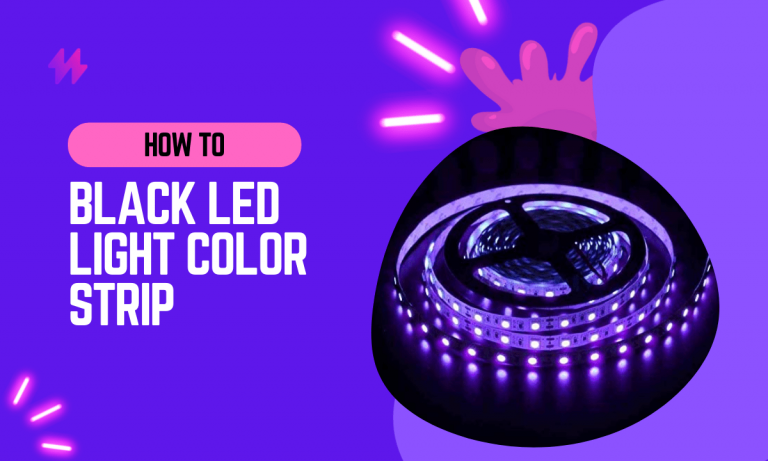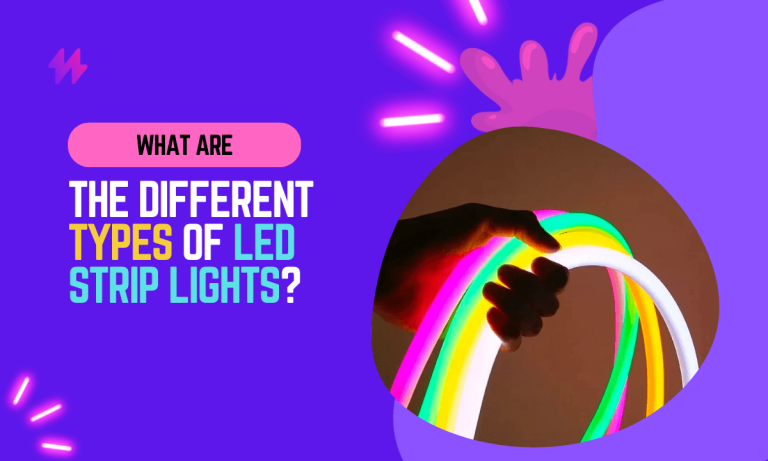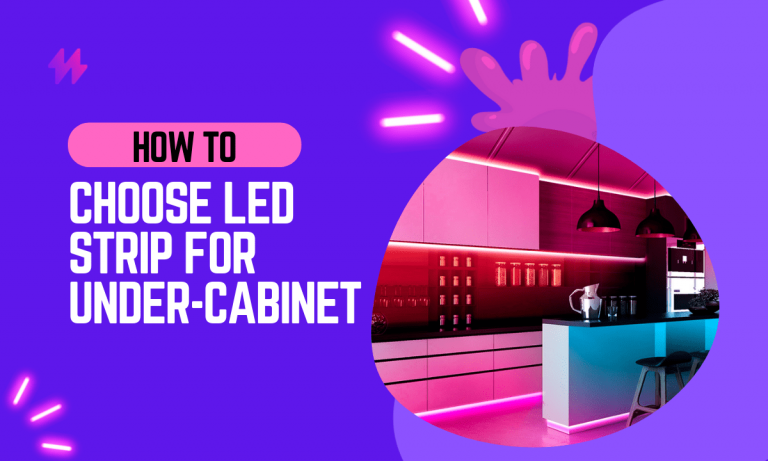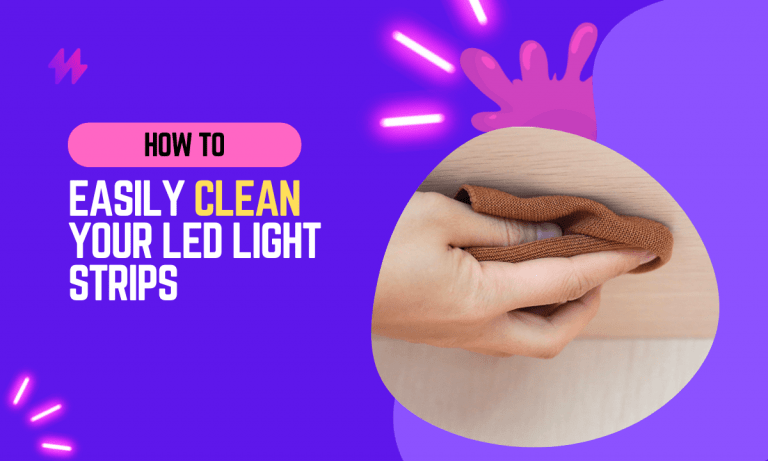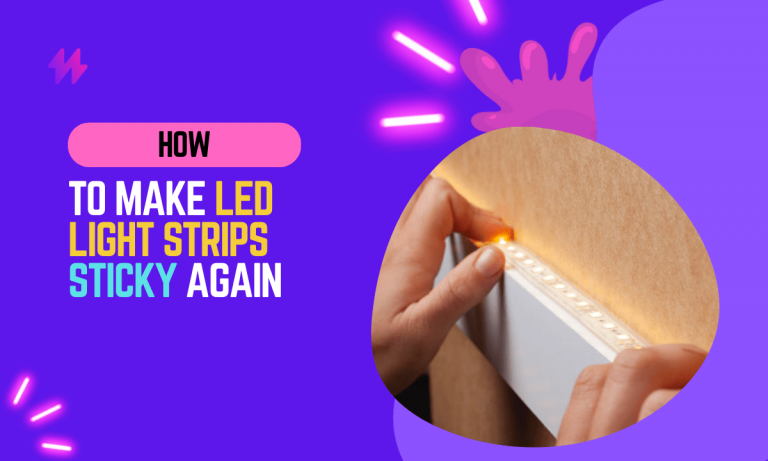How to Use UV Strip Lights & What They Are?
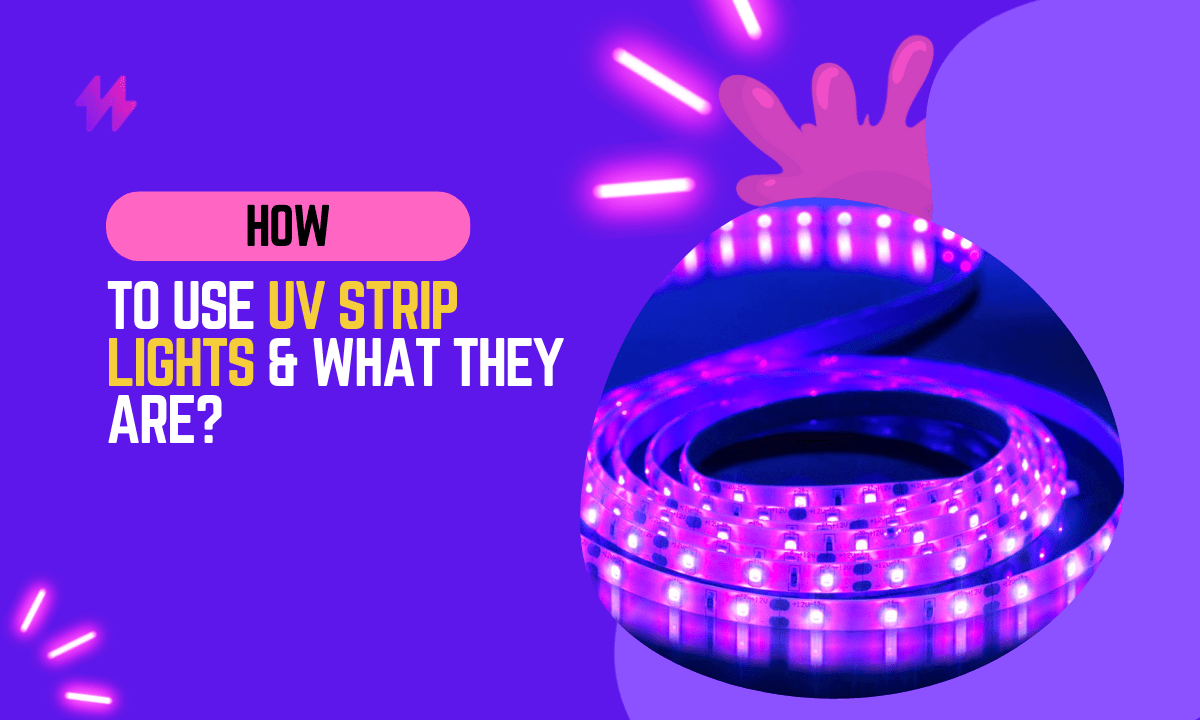
If you’re having problems with your UV strip lights, you’re not alone. UV strip lights are a popular choice for a variety of applications, but they can sometimes be finicky.
The most common problem with UV strip lights is flickering, it could be a sign of a problem with the power supply. But if your UV strip lights are not producing UV light, it could be a sign of a problem with the LEDs. To check the LEDs, you’ll need to use a UV light detector.
In this article, we will discuss the basics of UV strip lights, including their different types, applications, and benefits. We will also provide tips on how to choose the right UV strip light for your needs.
To effectively troubleshoot UV strip lights, understanding the concept of light wavelengths is essential. By selecting the right UV filter, users can enhance their lighting setup and achieve optimal performance from their ultraviolet LED lights.
Understanding UV Strip Lights: How to Use UV Strip Lights & What They Are
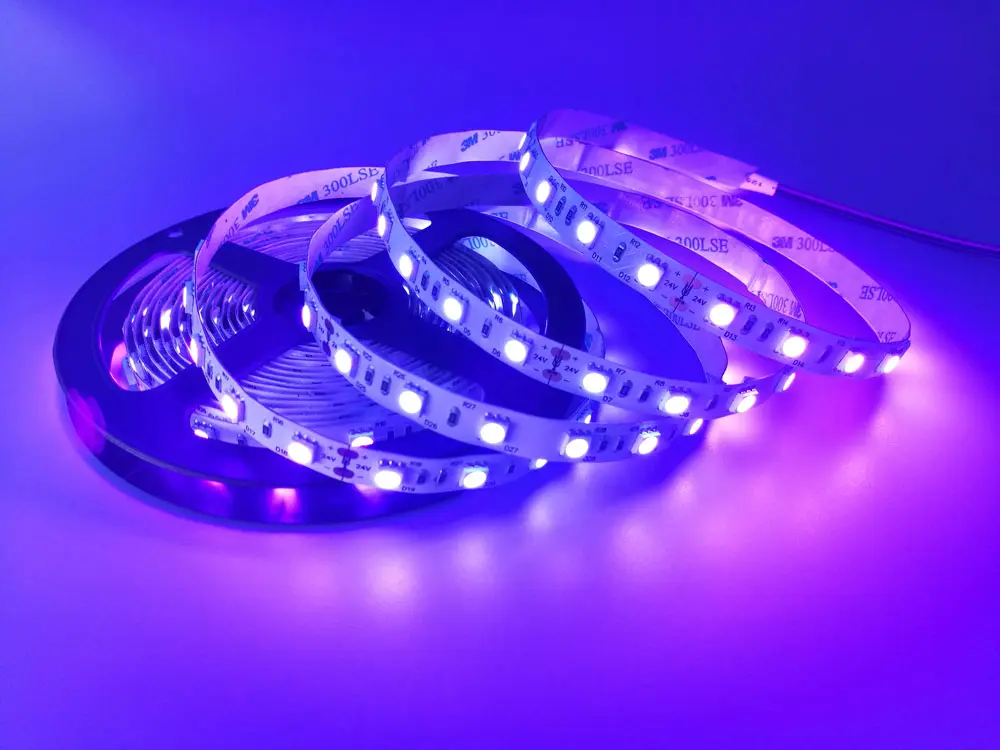
UV strip lights are a type of light that emits ultraviolet radiation. Ultraviolet radiation is a type of electromagnetic radiation that has a wavelength shorter than visible light but longer than X-rays.
UV strip lights are typically made of a long, thin strip of light-emitting diodes (LEDs). The LEDs are arranged in a row, and they emit ultraviolet radiation when they are turned on.
UV strip lights, like other light fixtures, can be utilized in various settings, including theatrical lighting and decorative lighting. Understanding the different ultraviolet wavelengths can help in selecting the right products for specific applications, ensuring an optimal lighting experience with benefits such as enhancing color channels and achieving desired color effects.
Exploring the Different Types of UV Strip Lights: Understanding UV-A Options
There are two main types of UV strip lights:
- UVA strip lights
- UVB strip lights
UVA strip lights emit ultraviolet radiation in the UVA range, which has a wavelength of 315-400 nanometers. UVA strip lights are used for a variety of purposes, including curing resins, disinfecting surfaces, and attracting insects.
UVB strip lights emit ultraviolet radiation in the UVB range, which has a wavelength of 280-315 nanometers. UVB strip lights are used for a variety of purposes, including tanning, skin cancer treatment, and plant growth.
Also read: Can You Use LED Strips to Grow Plants?
UV strip lights serve multiple purposes based on their wavelengths, with UVA being suitable for applications such as attracting insects and disinfecting surfaces, while UVB is more commonly used for tanning and plant growth. By understanding the specific applications and characteristics of UV strip lights, users can maximize their potential in different settings, resulting in impressive lighting results in both stage lighting and decorative environments.
UV Strip Lights: Exploring Their Various Applications
UV strip lights are used for a variety of purposes, including:
UV strip lights are versatile lighting solutions that can enhance various environments and applications while leveraging the benefits of ultraviolet rays. They can be particularly effective for accent lighting and theatrical lighting effects, providing unique lighting art and enhancing the aesthetic appeal of spaces.
- Curing resins
- Disinfecting surfaces
- Attracting insects
- Tanning
- Skin cancer treatment
- Plant growth
Choosing the Perfect UV Strip Light: Key Considerations
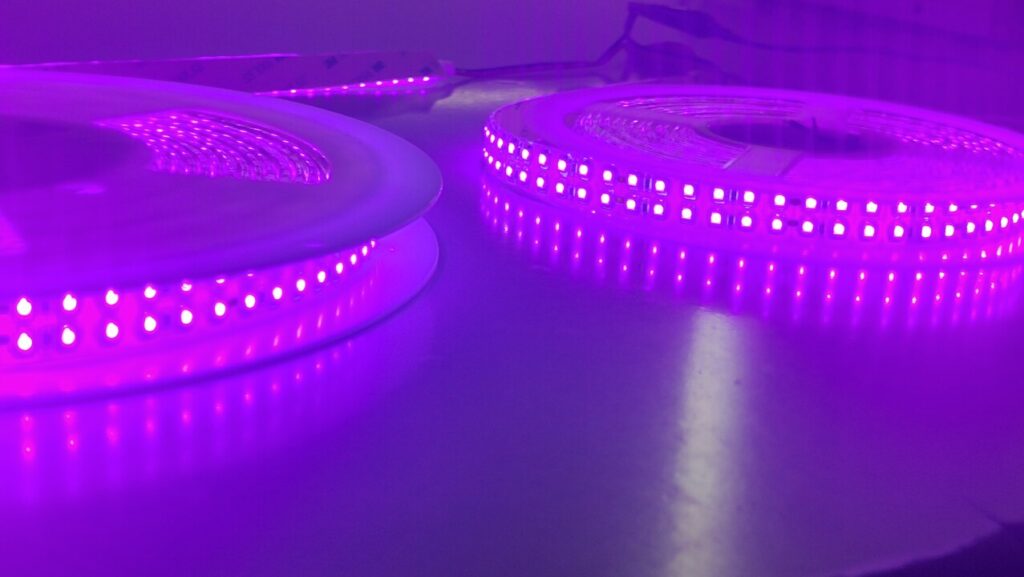
Choosing the right UV strip light involves considering several key factors to ensure it meets your specific needs. Here’s a breakdown of the points you mentioned:
When it comes to choosing the right UV strip lights, users should also look into the overall light color and brightness specification of the products. Understanding the differences in ultraviolet wavelengths, such as those emitted by a black light or uv-a light, can help in selecting strip lighting that best fits specific indoor and outdoor lighting applications.
**Understanding the Type of UV Radiation Emitted by UV Strip Lights**
UV light is typically categorized into three types: UVA, UVB, and UVC. Each type has different applications. UVA is commonly used for curing purposes, UVB for medical treatments, and UVC for germicidal applications. Determine the type of UV radiation that suits your intended use before selecting a UV strip light.
Understanding the different wavelengths of ultraviolet light can greatly impact how you utilize strip light products effectively. Installing UV lights can open up various applications, from vibrant blacklight effects in nightlife settings to enhancing visibility in cove lighting with their unique optical properties.
Understanding the Wavelength of UV Radiation in UV Strip Lights
UV light is further divided into different wavelengths, measured in nanometers (nm). The wavelength determines the light’s specific characteristics and applications. For example, UVA wavelengths typically range from 320 to 400 nm, while UVC wavelengths are shorter, around 200 to 280 nm. Choose a UV strip light with the appropriate wavelength for your intended application.
Also check: What is the Width Size of the LED Light Strip?
When selecting UV strip lights, it’s crucial to consider the specific wavelengths and their corresponding applications, such as UV-A technology for blacklights or UV-C radiation for disinfection. These choices not only affect the effectiveness of the lights but also impact factors like strip brightness and overall lighting installation quality in both indoor and outdoor settings.
Exploring the Power of UV Strip Lights for Optimal Performance:
The power of a UV light source is measured in watts. The required power depends on the size of the area you need to cover and the intensity of UV light needed for your application. Higher-wattage UV lights are generally suitable for larger spaces or more demanding applications, while lower-wattage lights may be sufficient for smaller areas.
When considering UV strip lights for your project, it’s important to note that the wattage rating can directly influence brightness and coverage in lighting applications. Depending on your intended use, whether it is for vibrant night-light effects or specialized commercial lighting applications featuring color-changing options, selecting the appropriate power and wavelength energy will enhance your environment’s aesthetic and functional qualities.
Choosing the Right Size for UV Strip Lights:
Consider the physical dimensions of the UV strip light, especially if you have space constraints. The size of the light should align with the available space and the coverage area required. Additionally, for certain applications, such as UV curing in manufacturing processes, the size of the light source should match the size of the objects being treated.
When selecting the size of UV strip lights, it’s important to consider the specific space and coverage requirements for your project. Properly sizing your installation not only optimizes light distribution but also enhances the overall aesthetic appeal of the environment through effective light art. Understanding how to use UV strip lights and what they are is crucial for maximizing their potential. This will allow users to exploit the benefits of UV-A energy alongside the unique optical properties of various color components in both indoor lighting applications and outdoor blacklight lighting.
Understanding the Price Factor for UV Strip Lights:
UV strip lights come in a range of prices depending on their features, power and intended use. It’s important to balance your budget with the specific requirements of your application. Cheaper options may lack certain features or have lower build quality, while more expensive models might offer advanced functionality or better durability. Consider your budget constraints while ensuring the selected UV strip light meets your performance requirements.
Also read: How to Dim LED Strip Lights with Confidence?
When considering the cost-effectiveness of UV strip lights, it’s essential to assess the balance between budget and quality. Keep in mind that investing in higher-quality lamps can yield superior light distribution and longevity, which is particularly beneficial for both indoor lighting applications and outdoor blacklight lighting. Moreover, understanding how to use UV strip lights and what they are can enhance your project significantly, ensuring you achieve the desired aesthetic and functionality efficiently.
FAQs on UV Light Strip Options
Find some of the most asked questions about UV strip lights.
Finding the right UV strip lights can often come down to understanding their various applications and characteristics, such as colorbright™ ultraviolet capabilities, which enhance artistic designs in indoor and outdoor environments. Knowing how to use UV strip lights and what they are will ensure effective installations that leverage high brightness and UV-responsive uses for optimal results.
Exploring the Different Types of UV Strip Lights: A Comprehensive Guide
There are two main types of UV strip lights: germicidal and non-germicidal. Germicidal UV strip lights emit UV-C light, which is the most effective type of UV light for killing bacteria and viruses. Non-germicidal UV strip lights emit UV-A or UV-B light, which is less effective for killing bacteria and viruses, but can be used for other purposes, such as tanning or insect control.
There are specific considerations when integrating UV strip lights into your overall lighting design, especially regarding their voltage and power consumption. To achieve the best results with these lights, it’s crucial to understand how to use uv strip lights & what they are, along with the various color components they emit, which can enhance both the aesthetic and functional qualities of your project.
Benefits of Using UV Strip Lights: An Overview
UV strip lights offer many benefits, including:
UV strip lights offer many benefits, including versatility in various applications like accent and ambient lighting. With the right configuration and understanding of light characteristics, users can create stunning visual effects and enhance any environment with a range of colors, from soft glow to vibrant hues using **strip lights** and **incandescent bulbs**.
- They are effective at killing bacteria and viruses.
- They are non-toxic and do not produce harmful emissions.
- They are energy-efficient.
- They are easy to install and use.
Understanding the Risks Associated with UV Strip Lights
There are a few risks associated with using UV strip lights, including:
When using UV strip lights, it is essential to consider potential risks such as exposure to invisible light and the presence of UV-A energy. Ensuring proper installation and understanding of strip light color will help mitigate issues and enhance the outcomes of your lighting projects, whether you are working with fluorescent blacklight or under-counter lights.
- UV light can damage the skin and eyes.
- UV light can cause skin cancer.
- UV light can damage some materials, such as plastics and fabrics.
Using UV Strip Lights Safely: Essential Tips & Best Practices
To use UV strip lights safely, you should:
- Wear protective eyewear and clothing when exposed to UV light.
- Avoid direct eye contact with UV light.
- Keep UV strip lights away from children and pets.
- Do not use UV strip lights for extended periods.
You may also like: Can LED Strip Lights be Hardwired?
To use UV strip lights safely, you should always ensure proper installation to mitigate any risks associated with UV exposure. Understanding components like **tube light** and **fluorescent lamps** can greatly enhance your **LED strip project**, ensuring safety and effectiveness in lighting applications.
Conclusion on UV Strip Lights: Final Insights and Recommendations
In conclusion, understanding the functionality and applications of UV strip lights is essential for effectively utilizing this unique lighting technology. UV strip lights, which emit ultraviolet light, offer a range of uses from artistic and aesthetic applications to practical and industrial purposes. For those in the entertainment industry, UV strip lights can enhance the ambiance of a venue by creating glowing effects on white or fluorescent materials, making them ideal for parties and performances. Similarly, artists and designers often use these lights to provoke dramatic visual effects that are not achievable with standard lighting. On a more practical note, UV lights are instrumental in processes such as curing adhesives and coatings quickly and efficiently, which is invaluable in manufacturing settings.
Moreover, when deploying UV strip lights, it is crucial to consider safety measures due to the potential harm that UV light can cause to skin and eyes. Ensuring that these lights are installed in places that do not allow direct exposure to people is vital. Additionally, using UV strip lights in applications such as sanitization—where they can kill bacteria and viruses on various surfaces—requires strict adherence to safety protocols to avoid any adverse effects. The versatility of UV strip lights also extends to forensic and scientific fields, where they are used to view substances that are invisible under normal light conditions. Whether enhancing the visual appeal of an event, speeding up industrial processes, or contributing to health and safety standards through sanitization, UV strip lights are a powerful tool. Proper understanding and application, paired with adequate safety measures, can leverage the full potential of UV strip lights in various domains, making them a valuable addition to both creative and functional projects.
How To Use UV Strip Lights & What They Are | Understanding the Functionality of UV Strip Lights
Understanding the functionality of UV strip lights begins with recognizing their diverse applications across various settings. These lights, operating within the UV-A range, emit a violet-like glow, ideal for highlighting fluorescent art and creating engaging light art displays. Unlike traditional incandescent bulbs, UV strip lights harness the power of LED technology, which not only allows for multiple color channels but also ensures a longer strip longevity. The strip consists of closely spaced LED emitters that produce high color accuracy while minimizing light power consumption. Utilizing a dim-to-warm or digital dimmer module can enhance the ambiance, giving users control over the strip light’s appearance. For permanent lighting installations, understanding the strip installation process and managing strip voltage drop are crucial to avoid dark spots and ensure even light output across wall wash lights or other applications.
How to Use UV Strip Lights & What They Are | How UV Strip Lights Work in Different Settings
UV strip lights operate across varying settings by harnessing the power of specific wavelengths of light. These lights utilize components like mercury lamps to emit UV-A light, also known as blacklight. The emitted light often features a bluish-white hue, perfect for accentuating blacklight objects. Settings such as parties, art installations, and even certain industrial applications benefit from this unique lighting, which enhances visibility for colored or fluorescent materials. Understanding how to use UV strip lights enhances their effectiveness in creating the desired ambiance while maintaining strip longevity.
The construction of UV strip lights involves careful consideration of several key elements. The LED strip product design includes flexible strips that can be altered in size and shape, making them suitable for diverse applications. With options for dimmable functionality and different color temperatures, users can customize their experience. Strip wires and power consumption are also critical factors, influencing the overall performance and efficiency of the installation. For those looking to install UV lights, paying attention to the strip segments, voltage, and actual light output ensures proper functionality and maximizes the benefits of using these innovative lighting solutions.
Key Components of UV Strip Lights
Understanding the key components of UV strip lights is essential for maximizing their functionality in various settings. These lights typically consist of LED strip segments that emit UV-A light or blacklight, making them ideal for creating a unique atmosphere. The LED strip voltage and run determine the strip power consumption, affecting longevity and brightness levels. The wavelength range, including near ultraviolet light and short wavelength options, contributes to the strip’s efficacy in enhancing colors. A diffuser cover can help soften the emitted bluish-white light while ensuring accurate colors.
Different applications may require specific attributes from UV strip lights. For example, a fixed color option or color changing capabilities can transform the mood of a space, utilizing various shades to suit different needs. The aluminum channel serves as a housing for the strips, allowing for better heat dissipation and longevity. LED density and strip size also play critical roles, as they can influence both the output of infrared and visible spectrum light. Prices may vary based on these factors, affecting choices from simplecolor™ options like amber, green, or violet to more powerful flood lights. Understanding these components enhances the user’s ability to implement strip lights effectively in their desired environment.

